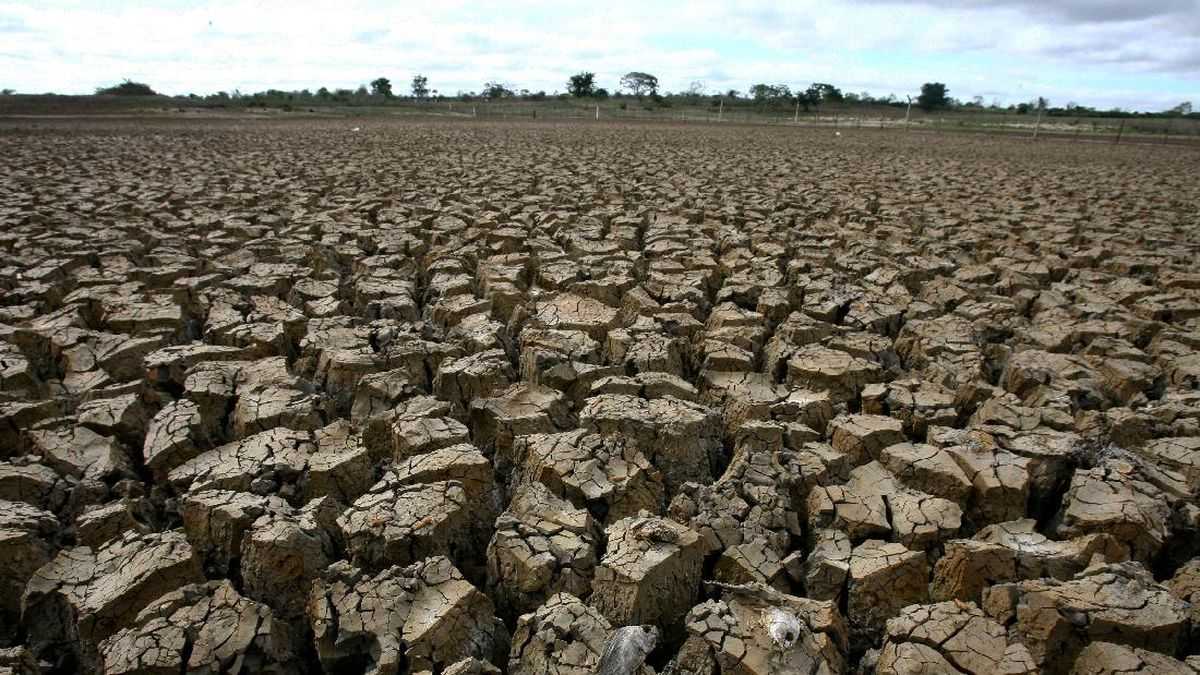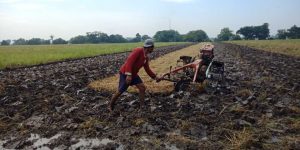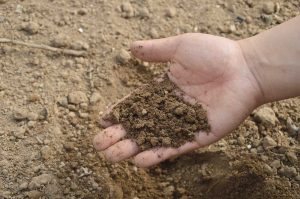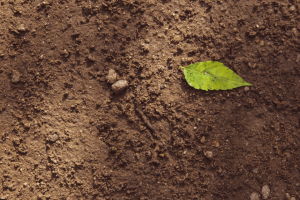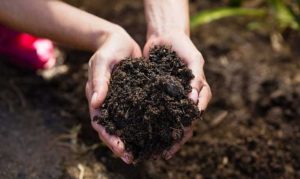Agricultural soil is one of the most important assets in ensuring the sustainability of food production, which is why its health and quality must always be maintained to support long-term plant growth.
Changes in weather patterns, excessive use of chemical fertilizers, improper land management practices, and uncontrolled land conversion often trigger soil damage that becomes difficult to restore if left unaddressed for too long.
Declining soil fertility not only affects crop yields but also disrupts the broader ecosystem balance, as soil plays a vital role in storing water, regulating nutrient cycles, and serving as a habitat for various essential microorganisms.
Consistent soil care efforts can prevent degradation, maintain an ideal structure, and preserve the organic content required by plants.
With the right measures, soil can remain productive, environmentally friendly, and contribute to strengthening food security as well as the sustainability of agriculture in the future.
Read Also : 7 Basic Techniques for Preparing Soil for the Planting Season
How to Maintain Agricultural Soil to Prevent Damage
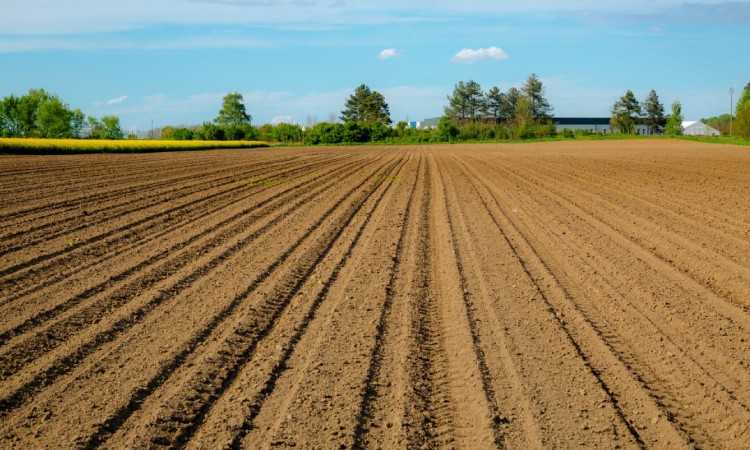
Here are some guidelines for maintaining agricultural soil to prevent damage and keep it productive in the long term:
1. Practicing Crop Rotation
Crop rotation is a highly important method to maintain soil ecosystem balance. Changing the types of crops grown each season can prevent excessive nutrient depletion, as every plant has different nutrient needs and absorption patterns.
Legume crops, for example, are capable of adding natural nitrogen to the soil, so when alternated with non-legume crops, they contribute positively to soil fertility.
Through this practice, soil acidity levels become easier to manage, and the risk of damage caused by continuous use of synthetic fertilizers can be minimized. Rotation also reduces dependency on chemical inputs, as the soil is able to naturally restore itself over time.
In addition to balancing nutrients, crop rotation is also effective in controlling pests and diseases. Infestations often increase when the same crop is planted repeatedly on the same land, since pests and diseases find a stable food source.
By rotating crops, pest life cycles are disrupted, which reduces the intensity of attacks. The land remains healthier and capable of producing more optimal yields.
This simple practice not only supports sustainable agricultural production but also helps maintain soil ecosystem stability in a natural way.
2. Adding Organic Matter Regularly
Adding organic matter is one of the most effective ways to preserve long-term soil quality. Compost, manure, or decomposed plant residues can improve soil structure, making it looser and easier to work with.
Organic matter enhances the soil’s ability to store water and nutrients essential for plant growth. Fertile soil rich in organic content allows for better root development, enabling plants to absorb nutrients more efficiently.
The positive changes in soil due to organic matter also encourage the activity of microorganisms that play a crucial role in maintaining soil health.
Organic content not only adds essential nutrients but also naturally improves the chemical balance of the soil.
Soil with adequate organic matter is more resistant to erosion, has a more stable structure, and reduces the risk of pollution from chemical fertilizers. Moisture retention is also improved, which lowers the need for frequent watering.
This creates significant benefits for farming systems that aim to maximize resource efficiency. By regularly adding organic matter, soil quality is maintained, ensuring that agricultural productivity continues sustainably without harming the environment.
3. Reducing Excessive Use of Chemical Fertilizers
Chemical fertilizers can indeed boost yields in the short term, but overuse can severely damage soil in the long run.
Continuous application of high doses of chemical substances disrupts the soil balance, reducing populations of beneficial microorganisms. The soil becomes compacted, organic matter decreases, and its ability to absorb and retain water is diminished.
These negative impacts can trigger land degradation that is difficult to restore if not addressed immediately. Another side effect is the buildup of harmful residues that deteriorate both soil quality and the surrounding environment.
Reducing chemical fertilizer use does not mean eliminating it entirely, but rather adjusting the dosage based on crop needs determined through soil analysis.
Combining chemical fertilizers with organic or biofertilizers is a wiser solution for maintaining soil fertility. Applying balanced fertilization techniques ensures long-term benefits for both land productivity and environmental health.
With proper management, soil can maintain its quality while continuing to support optimal plant growth. Striking a balance between chemical and organic fertilization is a key principle in preventing soil damage.
4. Implementing Soil Conservation Techniques
Soil conservation is a crucial step to keep soil productive and prevent damage caused by erosion or degradation. On sloped land, techniques such as terracing and contour bunds can reduce water runoff, preventing soil from being easily washed away.
Covering the soil with mulch or ground-cover plants also helps protect the nutrient-rich topsoil layer.
Through conservation measures, soil quality can be preserved for longer even under intensive farming. Stable and well-structured soil makes land more resilient to extreme weather changes.
Beyond erosion prevention, conservation techniques also help maintain soil moisture and improve physical soil conditions.
Soil with better moisture retention absorbs nutrients more effectively and provides a suitable environment for healthy root growth.
Conservation also increases organic matter in the soil, as plant residues retained on the surface decompose naturally. By consistently applying conservation methods, agricultural productivity is safeguarded while also contributing to the preservation of the wider environment.
5. Managing Irrigation Properly
Water is a critical factor in farming, but mismanagement can cause soil damage. Excessive watering may result in waterlogging, reducing aeration and making it difficult for plant roots to absorb oxygen.
Overly wet soil also becomes prone to soil-borne diseases. On the other hand, insufficient watering dries out the soil, causing cracks and reducing its ability to retain nutrients. Proper irrigation management aims to balance crop water needs with soil conditions.
Modern irrigation methods such as drip or sprinkler systems provide water efficiently without excess. Scheduling irrigation based on weather conditions, crop type, and soil texture is essential for maintaining soil health.
Efficient water use not only preserves soil quality but also conserves limited water resources. By managing irrigation effectively, soil can avoid structural damage and continue to support optimal plant growth in the long run.
6. Planting Cover Crops
Cover crops play a significant role in protecting the quality of agricultural land from degradation. The presence of vegetation such as legumes, certain grasses, or clovers helps maintain soil moisture longer and reduces erosion risk caused by heavy rainfall.
A green layer covering the soil surface also slows down water evaporation, ensuring that moisture remains even during hot weather. As a result, soil conditions become more stable and fertile over the long term.
Additionally, when cover crops decay and decompose naturally, they contribute organic matter that further enriches the soil.
The role of cover crops goes beyond moisture retention, as they also support biodiversity within the soil. Microorganisms and earthworms thrive better on protected land due to the abundance of organic material.
The root systems of cover crops strengthen soil structure, making it more resistant to pressure and water flow. With proper management, the use of cover crops not only enhances soil quality but also reduces long-term maintenance costs.
7. Controlling Pests Through Eco-Friendly Methods
Eco-friendly pest control provides major benefits for both soil and crop health. Long-term use of chemical pesticides often harms beneficial microorganisms in the soil.
Natural alternatives such as botanical pesticides, biological agents, or the introduction of natural predators can help reduce dependency on synthetic chemicals.
By using these methods, soil fertility is maintained because the natural ecosystem remains undisturbed. Healthy soil in turn supports sustainable crop productivity without excessive chemical intervention.
Environmentally friendly approaches also minimize the risk of groundwater contamination from pesticide residues. Ecosystem balance is better preserved since beneficial organisms like earthworms and decomposers continue to thrive.
Wise pest management not only protects the soil but also strengthens plants’ resistance to disease. A combination of biological, mechanical, and cultural strategies creates a more stable farming environment. As a result, crop yields improve while ensuring the long-term sustainability of agricultural land.
8. Reducing Excessive Soil Tillage
Excessive soil tillage often causes more harm than benefit. Activities such as deep plowing or frequent loosening of the soil can disrupt its natural structure.
This weakens soil stability, reduces water-holding capacity, and increases erosion risks. Frequent tillage also depletes organic matter since nutrient-rich topsoil breaks down more quickly. Over time, soil productivity declines, even if it initially appears fertile.
Reducing tillage intensity does not mean neglecting the land. Practices such as minimum tillage or no-tillage offer effective ways to maintain fertility while preventing damage.
These methods keep the soil loose while preserving its natural structure. Crop residues or mulch covering the surface help protect the topsoil from erosion. More stable soil ensures long-term productivity, making it a foundation for sustainable agriculture.
9. Using Disease-Resistant Crop Varieties
Selecting disease-resistant crop varieties is an important strategy for maintaining soil health and farm productivity.
Plants with natural resistance to pathogens require fewer chemical treatments, reducing the chemical burden on the soil. As a result, pesticide or fungicide residues that could harm microorganisms are minimized.
Fields planted with resistant varieties are more stable in productivity because crop failure risks are significantly lower. This strategy also reduces production costs by limiting the need for chemical inputs.
Another advantage of disease-resistant varieties is their adaptability to diverse environmental conditions. These plants are better equipped to withstand extreme weather, while also offering added protection for soil health.
Fields with minimal chemical intervention recover more quickly and maintain their natural fertility. In the long run, this approach effectively supports environmentally friendly and sustainable farming systems. A steady supply of harvests also strengthens overall food security.
10. Conducting Regular Soil Analysis
Soil analysis is a crucial step to determine the actual condition of farmland. Assessments of nutrient content, pH, texture, and moisture provide clear insights into the soil’s needs.
Such information helps farmers decide the right type and amount of fertilizer, ensuring inputs are applied more efficiently.
When soil is managed based on test results, fertility is preserved because nutrients are applied according to actual needs, rather than assumptions. Accurate soil care reduces risks of damage from over-fertilization or improper treatment.
Regular soil testing also allows early detection of potential problems. Issues such as high acidity or nutrient deficiencies can be addressed before they cause severe damage.
Routine monitoring makes it easier to keep soil healthy and productive. This approach not only boosts yields but also sustains farmland over the long term. Regular analysis thus becomes a fundamental basis for wiser agricultural decision-making.
Caring for agricultural soil requires long-term awareness to maintain productivity without harming the ecosystem.
Every step taken consistently will strengthen the soil’s capacity to withstand various environmental challenges. With proper care, soil can remain a sustainable resource for both present and future generations.
Read Also : The Proper Way to Maintain Soil Moisture in Dry Farmland

